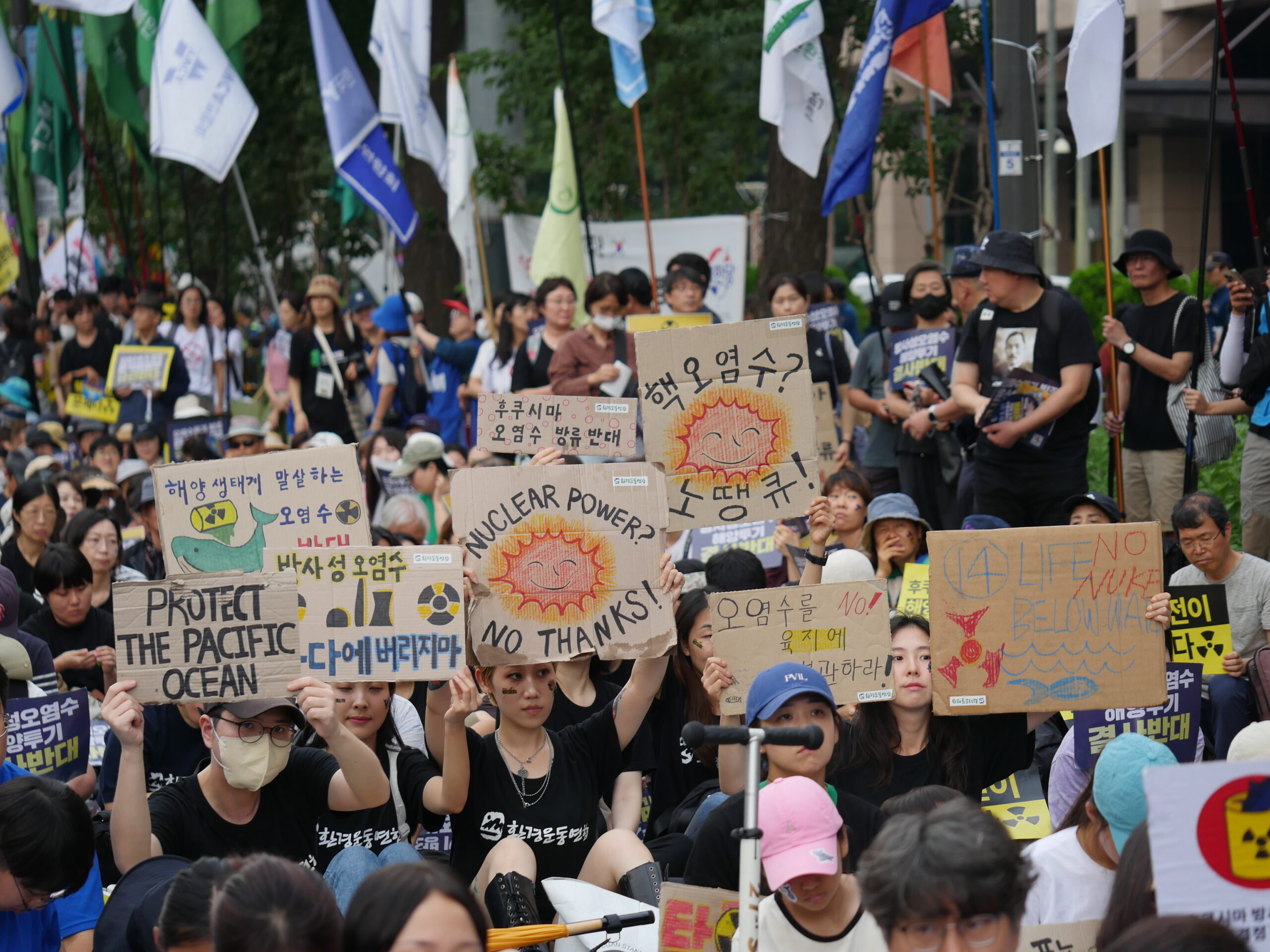Anti-nuclear movement

End the Nuclear Nightmare
Nuclear power accounts for approximately 30% of the electricity generation in Korea, making it the second largest source of energy. However, reliance on nuclear energy has its own problems. First, nuclear power carries the risk of radioactive contamination, which can cause serious illnesses, including cancer. There already exist such cases in which victims have suffered grievous injury.
Despite action against nuclear power by such victims, stakeholders in the nuclear energy field still refuse to admit the facts; instead, they hold fast to the claim that nuclear power is safe—a refrain that is now believed by masses despite the stories of victims.
Second, there is no complete solution for controlling radioactive waste. Most temporary storage plants are occupied, and ideas for a new type of safe and permanent storage system are now needed.
However, it is difficult to mark areas for safe storage of nuclear waste—i.e., at 100,000 years—given that South Korea is in an earthquake zone.
We believe that nuclear power is not a viable solution for replacing fossil fuels. We fight for climate justice to keep people and future generations safe. We thus campaigns to inform people about the dangers of nuclear plants and the benefits of switching to renewable energy.
Against Fukushima Radioactive Water Release
When talking about the anti-nuclear movement, an expression that often comes up is the phrase “no nukes.” The expression erupted during the anti-nuclear movement in the 1970s–80s and has been consistently used throughout history to call for the end of nuclear energy and weapons. It has thus become a trademark of the fight against nuclear power, including the cause to stop the release of radioactively contaminated water in Fukushima.
More than a decade has passed since the Fukushima Daiichi Nuclear Power Plant disaster in Japan in 2011. Fukushima has still not fully recovered. There are signs of damage everywhere and approximately 60,000 residents remain displaced.
As in the Chernobyl disaster of 1986, many Fukushima residents have been unable to return to their daily lives. In recent years, wastewater storage in the Fukushima reactors has reached its limits.
Approximately 940,000 tons of contaminated water have accumulated, and this number is expected to increase by 50,000–80,000 tons every year.
The Japanese government has announced its plan to release this wastewater into the sea as a cost-saving measure against storage on land. This decision has been made despite opposition from Japanese people and international society.
Along with people’s concerns about the safety of the marine ecosystem, KFEM will continue its monitoring and research on food safety to ensure the well-being of the Korean people.
